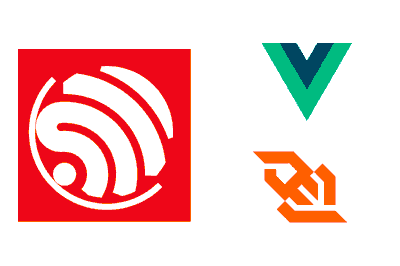We continue with our series of posts dedicated to the ESP8266 and the ESP32, seeing how to connect an application made in VueJS through Websockets thanks to Vue Native Websockets.
We will refer to the ESP8266, but the same code is compatible for the ESP32, adjusting the name of the libraries. At the end you have the code for both the ESP8266 and the ESP32.
In the previous post we reached one of our goals, which was to create an application in VueJS and Vuetify, served from the ESP8266, and that communicated with the backend through Ajax calls with the Axios library.
Now we want, basically, to do the same but through Websockets. This shouldn’t be too much of a problem because we already saw how to use Websockets in this post, as well as their advantages and disadvantages and when to use them in our project.
But the thing is, how do we integrate Websockets into our VueJS application on the frontend? Well, fortunately, it is not too difficult thanks to the Vue Native Websockets library, available at https://github.com/nathantsoi/vue-native-websocket.
To illustrate it, let’s start with a small example, similar to what we saw in the post about Websockets. In the next post we will move on to bigger things and integrate it with the rest of the API. But for now, let’s start with the basics. So let’s get to work!
The code in the ESP8266 is basically the same as we saw in the post about AsyncWebSockets, which we remember is separated into files by functionalities so that the code is more organized and reusable.
The main ‘.ino’ file simply has the initialization, and in the loop we send millis() without any delay. This serves as a stress test and to check the speed at which we can send a value.
#include <ESP8266WiFi.h>
#include <ESPAsyncWebServer.h>
#include <FS.h>
#include <WebSocketsServer.h>
#include "config.h" // Replace with your network data
#include "Websockets.hpp"
#include "Server.hpp"
#include "ESP8266_Utils.hpp"
#include "ESP8266_Utils_AWS.hpp"
void setup(void)
{
Serial.begin(115200);
SPIFFS.begin();
ConnectWiFi_STA();
InitWebSockets();
InitServer();
}
void loop(void)
{
// Example 2, called from server
ws.textAll(GetMillis());
}In the “Server.hpp” file we have the code related to the server part. In this example we only need the basic code necessary to serve the page from SPIFFS, which we are already used to.
AsyncWebServer server(80);
void InitServer()
{
server.serveStatic("/", SPIFFS, "/").setDefaultFile("index.html");
server.onNotFound([](AsyncWebServerRequest *request) {
request->send(400, "text/plain", "Not found");
});
server.begin();
Serial.println("HTTP server started");
}While the part related to Websockets is separated in the “Websockets.hpp” file, which has the following form. As we can see, we have only defined that when it receives a message from Websocket, it returns the value of millis() to the original sender.
AsyncWebSocket ws("/ws");
String GetMillis()
{
return String(millis(), DEC);
}
void ProcessRequest(AsyncWebSocketClient * client, String request)
{
String response = GetMillis();
client->text(response);
}Nothing new up to here and not particularly interesting either. The changes come in the front part where we will have to adapt the Vue application to work with Websockets.
In the Html page we have simply added the reference to Vue Native Websocket.
<!DOCTYPE html>
<html>
<head>
<title>ESP8266 Vue + Axios</title>
<meta charset="utf-8">
<meta http-equiv="x-ua-compatible" content="ie=edge">
<meta name="description" content="">
<meta name="viewport" content="width=device-width, initial-scale=1">
</head>
<!-- Our simple example APP -->
<div id="app">
<div>This is a counter {{counter}}</div>
</div>
<!-- From CDN -->
<!--<script src="https://cdn.jsdelivr.net/npm/[email protected]/dist/vue.min.js"></script>-->
<script src="https://cdn.jsdelivr.net/npm/[email protected]/dist/build.min.js"></script>
<script type="text/javascript" src="./vendor/vue.min.js"></script>
<script type="text/javascript" src="./vendor/nativeWs.min.js"></script>
<!-- We load the files that simulate our API and our Vue.JS app -->
<script type="text/javascript" src="./js/app.js"></script>
</body>
</html>And the most important part is in the JavaScript file of the application, where in the “mounted” method we have defined a callback function when we receive a message in the $socket object.
Vue.use(VueNativeSock.default, 'ws://' + location.hostname + '/ws')
var app = new Vue({
el: '#app',
data : function() {
return {
counter: 0
};
},
mounted() {
this.$socket.onmessage = (dr) => {
console.log(dr.data);
this.$set(this, 'counter', dr.data);
}
}
})Result
It wasn’t that difficult, was it? Now we take all of this, load it into our ESP8266, and access the served web page. We will see the page counter increasing rapidly as the ESP8266 sends the millis data.

We now have a Vue application communicating with the ESP8266 as a backend through Vue Native Websockets. In the next post we will see how to use all of this to serve a Vue application that controls the state of the ESP8266’s GPIO through Json sent by Websocket. Until next time!
Download the code
All the code in this post is available for download on Github.
Version for the ESP8266: https://github.com/luisllamasbinaburo/ESP8266-Examples
Version for the ESP32: https://github.com/luisllamasbinaburo/ESP32-Examples

